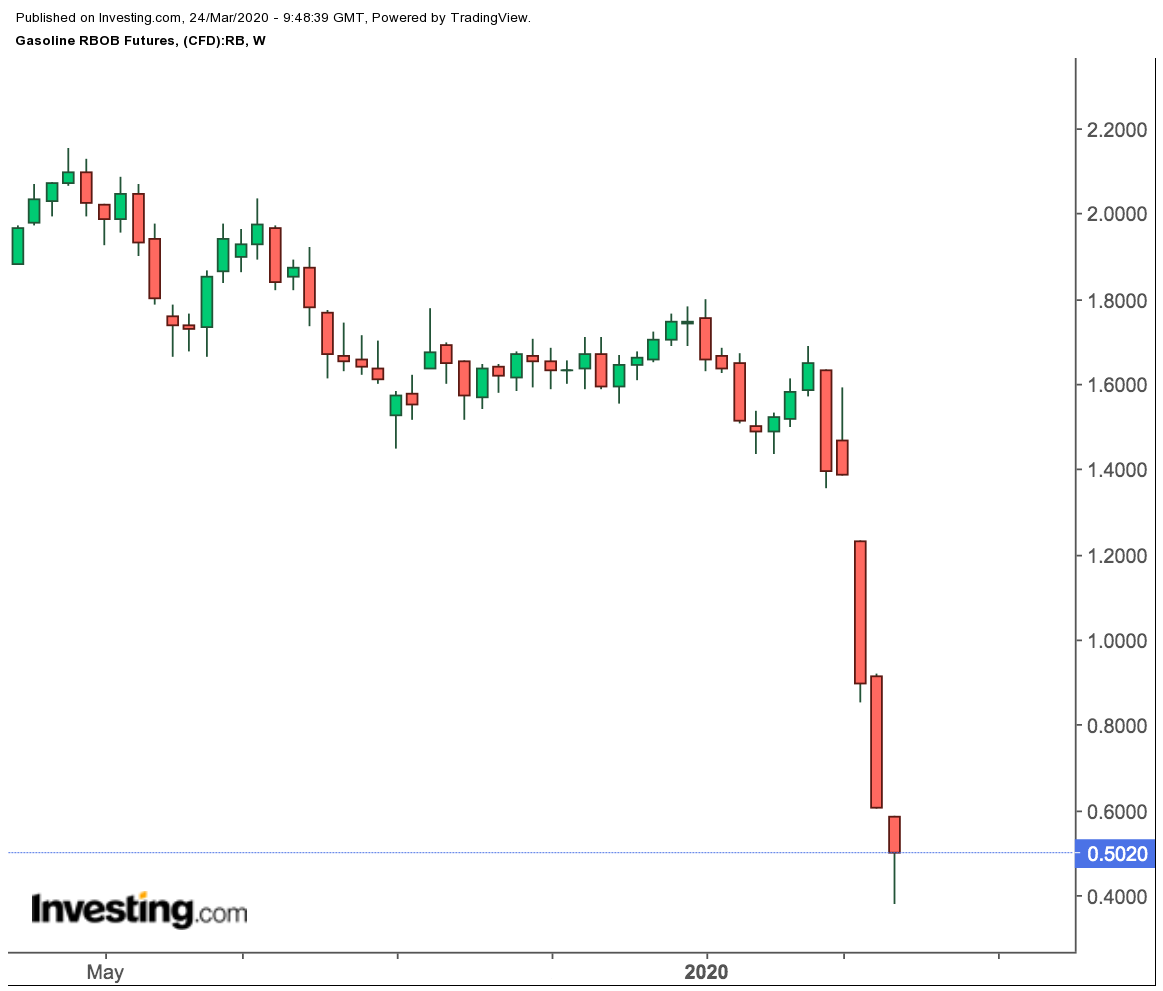Is the first U.S. gasoline build in eight weeks looming? At least one veteran watcher of the energy space seems to think so.
Dominick Chirichella, who has tracked the oil and gas markets for over 37 years, expects the U.S. Energy Information Administration to say in its weekly inventory report on Wednesday that gasoline stockpiles rose by 1.5 million barrels last week.
If true, it would be the first such growth since the week ended Jan. 24. Over the last two months, the EIA had reported a cumulative drop of 20.34 million barrels in gasoline stocks, with last week’s figure of 6.18 million barrels being the peak.
Of course, any hint of a gasoline build might come first from industry group American Petroleum Institute’s own weekly inventory sampling due at 4:30 PM ET (20:30 GMT) today. In last week’s sampling, the API reported a gas stockpile decline of 7.8 million barrels.
As of Monday, analysts polled by Investing.com had a consensus for another weekly drop in gasoline, to the tune of 1.67 million barrels.
Reality And Economics Come Knocking For Gasoline
Yet, Chirichella expects stockpiles to show a build as the reality and economics of the COVID-19 and its entrapment of America finally catches up with the gasoline market.
“Driving demand is nose-diving and thus gasoline consumption in the U.S. (and around the world) is going down exponentially,” Chirichella, director of risk and trading at the Energy Management Institute in New York, wrote in his daily note on Monday.
“This is what happens when everyone stays home,” he added.
Chirichella’s forecast comes at a particularly troubling time for gasoline, which hit record lows in New York futures trade on Monday in anticipation of demand destruction for motor fuels from the widening U.S. lockdown over the pandemic.
Gasoline Futures Under 40 Cents/Gallon, Kentucky Pump Price Below $1
U.S. RBOB gasoline’s front-month contract settled on Monday at 41.18 cents per gallon, down 32% on the day. It earlier sank to 37.80 cents, the lowest for a front-month gasoline contract since futures of the energy product began trading on the New York Mercantile Exchange in 1984. Year-to-date, RBOB is down 73%.
The record low in futures came as the average retail price of gasoline at U.S. pumps fell to $2.14 per gallon at the weekend from a January high of $2.67, according to the American Automobile Association.
But in some parts of the United States, prices were less than half of that average.
Kentucky’s London city, for instance, was the first to see fuel prices go below $1 a gallon, a result of coronavirus-related lockdowns, Bloomberg reported.
The last time the retail price of gasoline was lower than $1 a gallon was before the 1990s.
“You almost can’t even give it away,” Paul Bingham, head transportation economist at IHS Markit Ltd, told Bloomberg, noted, describing gasoline’s latest phenomenon.
“The price elasticity has totally changed. It’s full-on demand destruction.”
Refining Margin Under Pressure
What’s destroyed, though, isn’t just the flat price of gasoline — it’s also the refining margin, or what’s known in market lingo as the “crack.”
In Monday’s trade, the RBOB crack spread was trading at a negative $2 barrel.
“It is not going to be very long before refiners start to throttle back refinery runs,” wrote Chirichella.
“Fortunately for refiners the ULSD crack is still relatively robust as diesel transportation will hold up a lot better than gasoline as trucks and trains are running at full capacity and food and essential store shelves need to be continually restocked,” he said, referring to the margin for distillates that include diesel and heating oil.
There was at least one bright spot, however, in Monday’s energy trade because of the RBOB crack.
West Texas Intermediate, the New York-traded benchmark for U.S. crude prices, settled up 73 cents, or 3.2%, at $23.36 per barrel as market participants leveraged on crude’s relatively better fundamentals to gasoline. Said John Kilduff, founding partner at New York energy hedge fund Again Capital:
“Make no mistakes about it — today’s rise in crude had all to do with the gasoline-crude crack spread play, rather than any meaningful improvement in oil’s fundamentals.”
